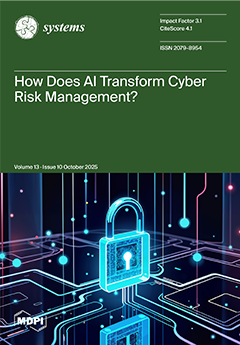The purpose of this research is to systematically map and analyze the use of AI technologies in project management, identifying themes, research gaps, and practical implications. This study conducts a systematic literature review (SLR) that combines bibliometric analysis with qualitative content evaluation to
[...] Read more.
The purpose of this research is to systematically map and analyze the use of AI technologies in project management, identifying themes, research gaps, and practical implications. This study conducts a systematic literature review (SLR) that combines bibliometric analysis with qualitative content evaluation to explore the present landscape of AI in project management. The search covered literature published until November 2024, ensuring inclusion of the most recent developments. Studies were included if they examined AI methods applied to project management contexts and were published in peer-reviewed English journals as articles, review articles, or early access publications; studies unrelated to project management or lacking methodological clarity were excluded. It follows a structured coding protocol informed by inductive and deductive reasoning, using NVivo (version 12) and Biblioshiny (version 4.3.0) software. From the entire set of 1064 records retrieved from Scopus and Web of Science, 27 publications met the final inclusion criteria for qualitative synthesis. Bibliometric clusters were derived from the entire set of 885 screened records, while thematic coding was applied to the 27 included studies. This review highlights the use of Artificial Neural Networks (ANN), Case-Based Reasoning (CBR), Digital Twins (DTs), and Large Language Models (LLMs) as central to recent progress. Bibliometric mapping identified several major thematic clusters. For this study, we chose those that show a clear link between artificial intelligence (AI) and project management (PM), such as expert systems, intelligent systems, and optimization algorithms. These clusters highlight the increasing influence of AI in improving project planning, decision-making, and resource management. Further studies investigate generative AI and the convergence of AI with blockchain and Internet of Things (IoT) systems, suggesting changes in project delivery approaches. Although adoption is increasing, key implementation issues persist. These include limited empirical evidence, inadequate attention to later project stages, and concerns about data quality, transparency, and workforce adaptation. This review improves understanding of AI’s role in project contexts and outlines areas for further research. For practitioners, the findings emphasize AI’s ability in cost prediction, scheduling, and risk assessment, while also emphasizing the importance of strong data governance and workforce training. This review is limited to English-language, peer-reviewed research indexed in Scopus and Web of Science, potentially excluding relevant grey literature or non-English contributions. This review was not registered and received no external funding.
Full article





